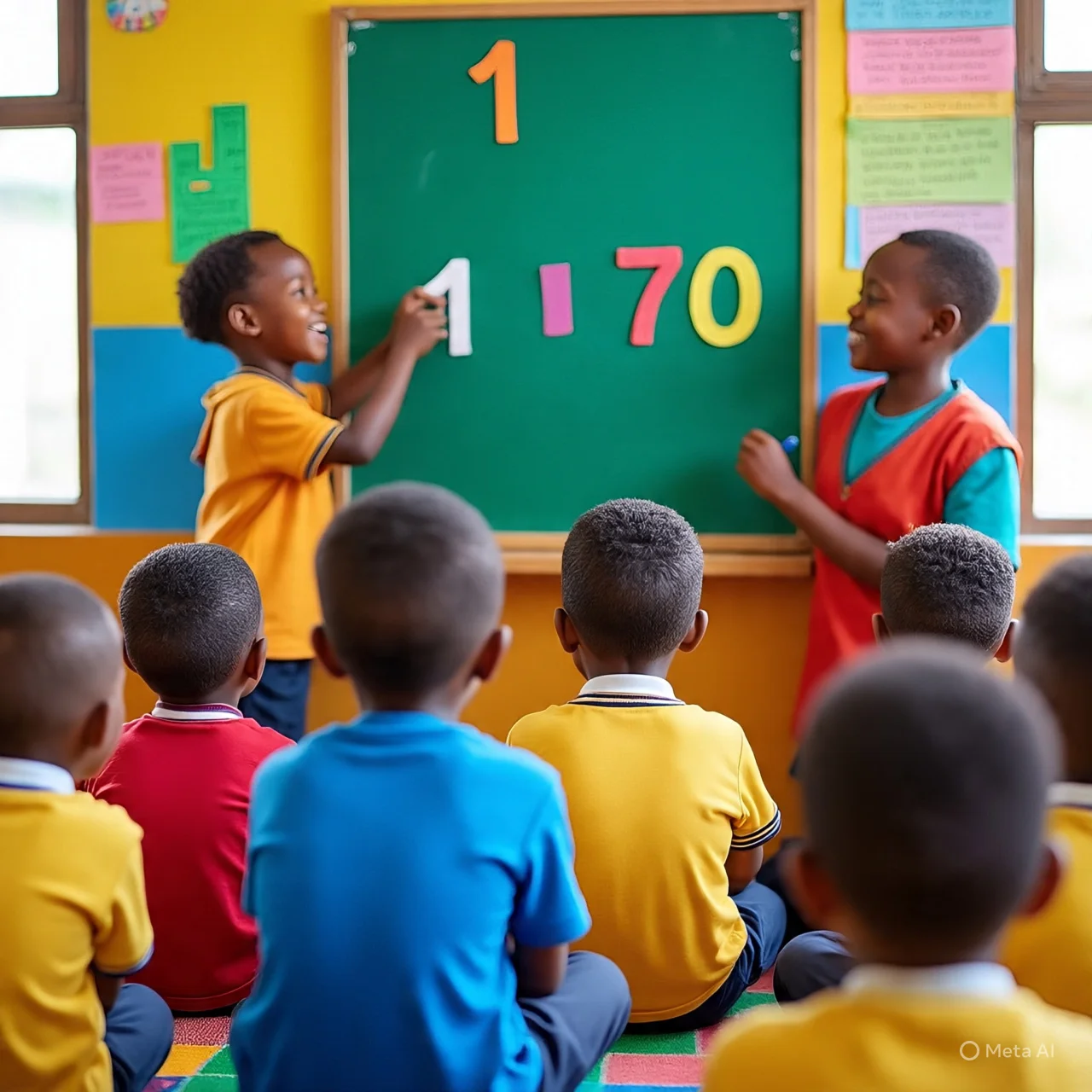Movement of Air (Wind) for Primary 1 – Basic Science Lesson
️ Movement of Air (Wind): Primary 1 Basic Science Lesson | Week 3
1. Lesson Plan Details
Subject: Basic Science
Class: Primary 1
Term: Second Term
Week: 3
Age: 5–6 years
Topic: Air
Sub-topic: Movement of Air (Wind)
Duration: 40 minutes
2. Behavioural Objectives
By the end of the lesson, pupils should be able to:
- Explain what wind is in simple terms.
- Identify at least 5 things that the wind can move.
- Mention objects that contain air (e.g., tires, balls, balloons).
- State at least 3 importance of air.
- Demonstrate how air occupies space using a balloon.
- Answer simple questions about movement of air.
- Distinguish between objects that contain air and those that do not.
3. Keywords (With Meanings)
- Air – The invisible gas around us.
- Wind – Moving air.
- Matter – Anything that has weight and occupies space.
- Space – A place that can be filled.
- Inflate – To fill with air.
- Breeze – Soft and gentle wind.
- Storm – Strong and heavy wind.
- Balloon – A rubber object filled with air.
- Tyre Tube – A rubber ring inside a bicycle or car tyre that holds air.
- Energy – Power that makes things work.
4. Set Induction (Attention-Grabbing Story)
The teacher tells this short, lively story:
“Children, yesterday evening I was sweeping my compound. As I swept, a soft breeze came from nowhere and carried my papers away! ‘Ah! This wind wants to help me scatter everywhere,’ I shouted. My little niece, Titi, laughed and said, ‘Aunty, it is the wind playing with you.’ So today, we will learn about this funny, powerful thing called the wind.”
Learners respond with excitement.
5. Entry Behaviour
Pupils have seen leaves, wrappers, and papers being blown by wind at home or in school.
They also know that balloons and balls contain air.
6. Learning Resources and Materials
- Balloons
- Bicycle pump (optional)
- Tyre tube
- Paper, leaves, feather
- Pictures of windy weather
- Real objects (cloth, bottle, balloon)
7. Building Background / Connection to Prior Knowledge
The teacher reminds them of the previous lesson on air around us, then asks:
- “Have you ever felt air blowing on your face?”
- “What did the air move?”
Pupils give responses.
8. Embedded Core Skills
- Critical thinking
- Observation
- Communication
- Creativity
- Environmental awareness
9. Reference Books
- Lagos State Unified Scheme of Work for Basic Science
- Nigeria Primary Science Textbook
- Online resources (Lessonshabitat.com)
10. Instructional Materials
- Balloons
- Tyre tube
- Pictures
- Paper
- Leaves
- Sand
11. Content (Detailed Explanation + Examples)
A. Definition and Meaning
- Air is a matter — it occupies space and has weight.
- Air can move, and when it moves, we call it wind.
- Wind is moving air that can blow things from one place to another.
- Air fills objects like balloons, tyres, balls and helps them become bigger.
- Air is everywhere — in water, on land, in the sky, and inside our bodies (lungs).
- Some winds are gentle, like breeze; some are strong, like storm.
- Wind helps living things — animals, humans, and plants.
- Air gives energy, called wind energy.
- We need air to breathe and stay alive.
- Air is present in bubbles and inside empty bottles and cups.
B. 10 Examples of Objects the Wind Can Move
- Papers
- Leaves
- Clothes
- Feathers
- Wrappers
- Sand/dust
- Roofs (strong wind)
- Buckets
- Light sticks
- Plastic bottles
C. 5 Examples of Objects That Contain Air
- Balloon
- Bicycle tyre
- Car tyre
- Football
- Beach ball
D. 5 Examples Showing That Air Occupies Space
- A balloon becomes big when filled.
- A football expands when pumped.
- A bottle makes a “puff” sound when air escapes.
- A polythene bag becomes full when you blow inside it.
- A beach ball floats with air inside it.
E. 3 Importance of Air
- Air helps humans and animals to breathe.
- Plants use air to grow.
- Air helps aeroplanes fly.
- Air gives wind energy for moving machines.
- Air helps fires burn.
12. Presentation
Teacher’s Activities
- Revises previous lesson.
- Introduces new topic: Movement of Air.
- Shows balloons, leaves, papers.
- Demonstrates blowing air to move objects.
- Demonstrates filling balloon with air.
- Writes key points on the board.
- Guides pupils in identifying objects containing air.
- Asks questions.
- Monitors class activities.
- Gives feedback.
Learners’ Activities
- Listen and respond.
- Observe objects being moved by air.
- Blow air to move papers or feathers.
- Touch and squeeze an inflated balloon.
- Answer questions.
- Take notes.
13. Class Activity Discussion (10 FAQs with Answers)
- Q: What is wind?
A: Wind is moving air. - Q: Can we see air?
A: No, but we can feel it. - Q: Can wind move things?
A: Yes, it can. - Q: Does balloon contain air?
A: Yes, when inflated. - Q: Does air occupy space?
A: Yes. - Q: What does gentle wind feel like?
A: Cool and soft. - Q: Can strong wind damage things?
A: Yes, it can pull roofs or trees. - Q: Do we need air to breathe?
A: Yes. - Q: Do aeroplanes need air?
A: Yes, for flying. - Q: Is air everywhere?
A: Yes.
14. Evaluation Questions
A. 10 Fill-in-the-blank Questions (with options)
- Air is a _______.
(a) matter (b) nothing (c) sand - Moving air is called _______.
(a) wind (b) water (c) stone - A balloon contains _______.
(a) oil (b) air (c) fire - A tyre tube is filled with _______.
(a) sand (b) air (c) water - Gentle wind is called _______.
(a) storm (b) breeze (c) fire - Strong wind can move _______.
(a) rock (b) leaf (c) iron - Air helps us to _______.
(a) sleep (b) breathe (c) wash - An inflated ball has _______.
(a) air (b) pepper (c) milk - Wind can blow away _______.
(a) paper (b) stone (c) spoon - Air occupies _______.
(a) nothing (b) space (c) metal
B. Ten Short Answer Questions
- What is wind?
- Mention two things wind can blow away.
- What do we breathe in?
- Name two things that contain air.
- What is matter?
- Why do balloons become big?
- Give one importance of air.
- What is a storm?
- Does air occupy space?
- Mention one place where air is found.
15. Assessment (10 Short-Answer Questions)
- Define air.
- Give one use of air.
- Write one example of a windy day.
- Mention one object that contains air.
- What is the meaning of breeze?
- Name one thing wind can move.
- Is air everywhere?
- Why is air important?
- What does inflated mean?
- Mention something that can be filled with air.
16. Conclusion
Teacher goes around the class, checks pupils’ work, corrects errors gently, praises effort, and closes the lesson.










